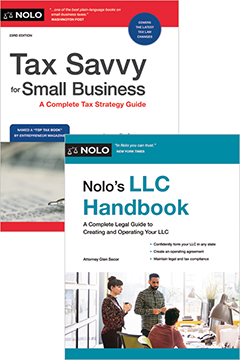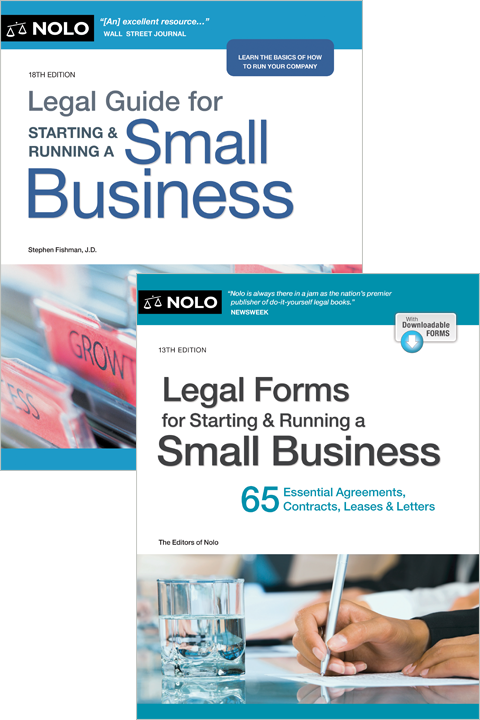Delaware provides multiple options for dissolving your corporation. Learn the different methods to dissolve your corporation, the alternative forms to file, and the complex rules for notifying creditors.
For some corporations, a time comes when the people who own and run things voluntarily decide to close the business. If you've reached that point with your Delaware corporation, you'll need to take care of multiple tasks—including what's called "dissolving and winding up" your business.
While a corporation can be involuntarily dissolved administratively or through the courts, this article covers voluntary dissolution by a corporation's shareholders. Also, while there are streamlined procedures for dissolving corporations that haven't yet issued stock or started doing business, or have only two shareholders who each own 50% of the company's stock (a "joint venture corporation"), those procedures aren't covered in this article.
Let's go through the steps to dissolve your corporation in Delaware. Keep in mind that your corporation's articles of incorporation and bylaws might have additional requirements or procedures for your corporation to follow.
(For more general guidance on the dissolution process, read about how to dissolve a corporation.)
- 1. Shareholders Vote to Dissolve the Corporation
- 2. Pay All Taxes and File Annual Franchise Tax Report With Delaware
- 3. File a Certificate of Dissolution With Delaware
- 4. Notify Creditors of Your Corporation's Dissolution
- 5. Settle Debts and Distribute Remaining Assets to Shareholders
- 6. Close Bank Accounts and Cancel Licenses, Permits, and Out-of-State Registrations
- Final Guidance on Dissolving Your Delaware Corporation
1. Shareholders Vote to Dissolve the Corporation
In Delaware, you can dissolve a corporation in one of two ways:
- a majority of the board of directors adopts a resolution to dissolve the corporation and a majority of the shareholders vote in favor of the resolution, or
- all shareholders consent in writing to the dissolution.
(Del. Code tit. 8, § 275 (2023).)
In both instances, only shareholders who are entitled to vote on the dissolution are allowed to vote. So, you only need a majority vote by shareholders entitled to vote or written consent by all shareholders entitled to vote.
The board of directors must give notice to the shareholders that there will be a meeting to vote on the dissolution. The notice must be given between 10 and 60 days before the meeting date and include the following information:
- the place of the meeting (if any)
- the date and time of the meeting
- how the shareholder can access the meeting remotely (if appropriate), and
- the purpose of the meeting.
(Del. Code tit. 8, § 222 (2023).)
The notice can be delivered to the shareholders by U.S. mail, courier service, or by email. (Del. Code tit. 8, § 232 (2023).)
You should record the corporate action and vote and keep that record in your corporation's books or files. For example, you should keep meeting minutes for the shareholders' meeting.
2. Pay All Taxes and File Annual Franchise Tax Report With Delaware
After shareholders approve the dissolution of your corporation, you must file a certificate of dissolution with the Delaware Department of State ("DOS"). But before you can file your certificate, you must pay all your state taxes and file all annual franchise tax reports. (Del. Code tit. 8, § 277 (2023).)
You can find annual report and tax instructions on the Delaware Division of Corporations website. You should contact the Division to make sure you're up to date on all fees and filings.
You'll need to pay and file your tax obligations, but you're not required to receive a tax clearance certificate or letter to file your certificate of dissolution.
3. File a Certificate of Dissolution With Delaware
For corporations that are voluntarily dissolving after they've issued shares and started doing business, there are two different certificates of dissolution available: the standard form and the "short form." These two forms have different filing fees.
You can use the short form only if your corporation meets three requirements:
- it has no assets and has stopped doing business
- for each year since its incorporation in Delaware, it's been required to pay only the minimum state franchise tax, and
- it's paid all franchise taxes and fees due through the end of the year when its certificate of dissolution will be filed.
As of 2023, the fee to file the short form is only $10. (Del. Code tit. 8, § 391 (2023).)
If you don't meet the above requirements, then you'll need to submit the standard form. Both dissolution forms require the following basic information:
- the name of the corporation
- the date of incorporation
- the date the dissolution was authorized, and
- the names, titles, and addresses of the officers and directors of the corporation.
(Del. Code tit. 8, § 275 (2023).)
As of 2023, the filing fee for the standard form is $204.
You'll need to complete and mail the appropriate dissolution form and a cover memo, along with the filing fee, to the Delaware DOS. You can find the dissolution forms and the cover memo on the dissolutions and cancellations section of the Division of Corporations website. The forms will need to be signed by an authorized officer of the corporation.
Note that dissolution, alone, doesn't stop actions, suits, or proceedings begun by or against your corporation prior to dissolution or, generally speaking, for a period of three years after dissolution.
4. Notify Creditors of Your Corporation's Dissolution
One of the first tasks in winding up of your business is notifying creditors of the dissolution. Giving notice is optional. However, providing notice will help limit your liability and also allow you to make final distributions to shareholders with more confidence.
Delaware law allows you to dispose of (bar) claims by notifying creditors of your corporation's dissolution and giving them a chance to submit their claims to you. If the creditor doesn't send in their claim by the specified deadline, then their claim is no longer valid or recognized.
Under Delaware law, you give notice by both sending a written document directly to known claimants and by publishing the same notice in a newspaper. The notice must include the following information:
- a statement that all claims must be in writing
- a statement that says that the claim must reasonably identify the creditor and describe the claim
- the mailing address where the claim must be sent
- the date that the claim must be received by the corporation or successor entity (the deadline can't be earlier than 60 days from the date of the notice)
- a statement that says that the claim will be barred if not received by the deadline
- a statement that says that the corporation or a successor entity can make distributions to other creditors and to the corporation's shareholders without providing further notice to the creditor; and
- the aggregate amount, on an annual basis, of all distributions made by the corporation to its shareholders for each of the three years prior to the date the corporation dissolved.
You'll need to mail the notice to known creditors by registered or certified mail, return receipt requested.
(Del. Code tit. 8, § 280 (2023).)
There are additional rules regarding giving notice, such as exactly where it must be published and how it must be sent to known creditors. Delaware also has intricate rules for how and when to respond to claims. Because many of these rules can be hard to understand, you should strongly consider getting assistance from a business attorney when giving notice to creditors.
5. Settle Debts and Distribute Remaining Assets to Shareholders
Once you've liquidated your corporation's assets and notified your creditors of the dissolution, it's time to settle any of the company's recognized debts. If creditors have responded to your notice with claims that you don't deny (or "reject"), then you're required to pay these claims in full if you have sufficient assets to do so. If you don't have enough money to pay all of the claims, then you must pay the claims according to their priority.
As long as all of the recognized claims have been paid and appropriate deadlines have expired, you can distribute any leftover assets to your corporation's shareholders. The shareholders should be paid according to their shares. So, if a shareholder owns 10% of the corporation's stock, then they should receive 10% of the corporation's remaining assets.
6. Close Bank Accounts and Cancel Licenses, Permits, and Out-of-State Registrations
At this point in the process, you should've settled your debts and paid any leftover money to your shareholders. Your business bank account should be at zero. You should now close your bank account.
If you have any business, professional, or occupational licenses or special permits in your business's name, you should cancel them. You might be able to transfer or sell some licenses and permits.
If your corporation is registered or qualified to do business in another state, you must file the necessary forms to terminate those registrations. If you don't file these forms, you'll continue to be liable for annual fees and minimum business taxes in those states.
Final Guidance on Dissolving Your Delaware Corporation
Delaware has specific rules and conditions related to the dissolution process. Read the state dissolution laws carefully to make sure you're completing each step correctly. If you need additional help, you should talk to a business lawyer who has experience dissolving corporations. They can walk you through the dissolution process, file any necessary forms, draft dissolution notices, and guide you in distributing your assets.
You can find additional information, such as forms, mailing addresses, phone numbers, and filing fees on the DOS website and the DOR website.
Dissolving and winding up your corporation is only one piece of the process of closing your business. For further, general guidance on many of the other steps involved, check out our 20-point checklist for closing a business and the our article on what you need to know about closing a business.
- 1. Shareholders Vote to Dissolve the Corporation
- 2. Pay All Taxes and File Annual Franchise Tax Report With Delaware
- 3. File a Certificate of Dissolution With Delaware
- 4. Notify Creditors of Your Corporation’s Dissolution
- 5. Settle Debts and Distribute Remaining Assets to Shareholders
- 6. Close Bank Accounts and Cancel Licenses, Permits, and Out-of-State Registrations
- Final Guidance on Dissolving Your Delaware Corporation



